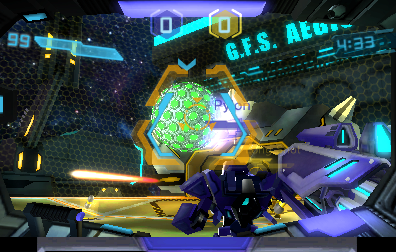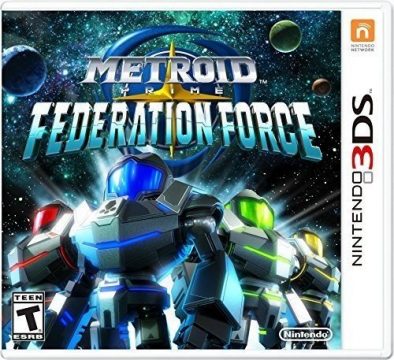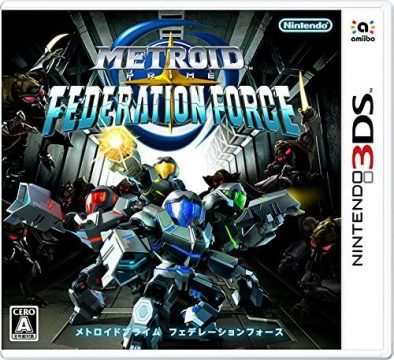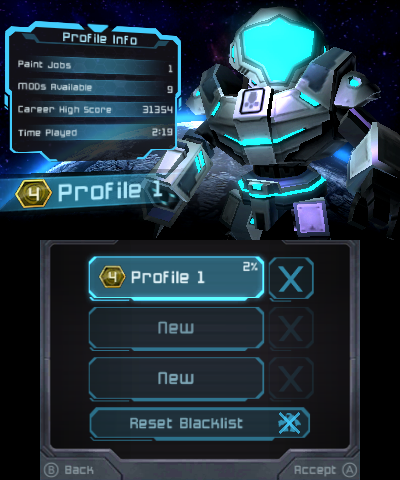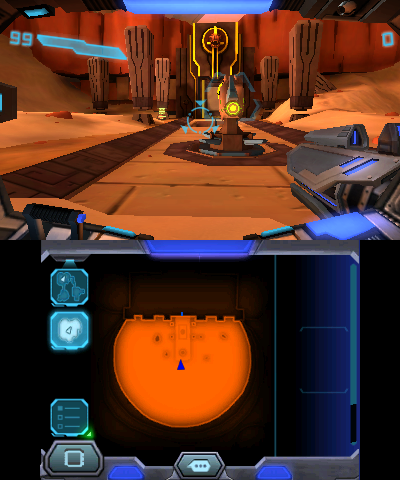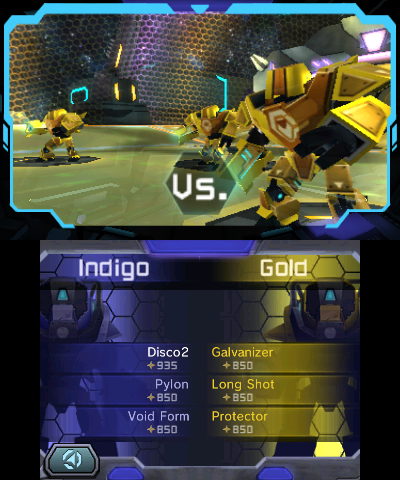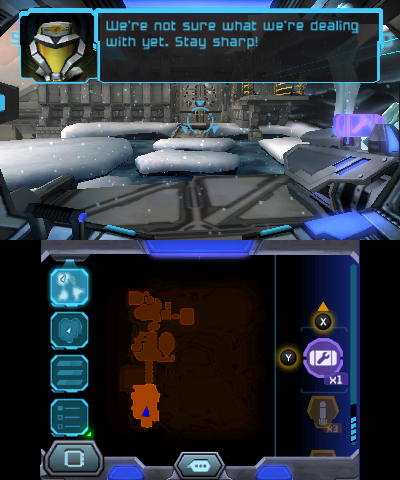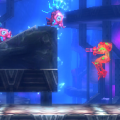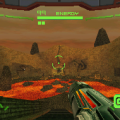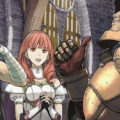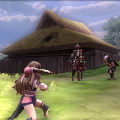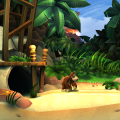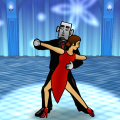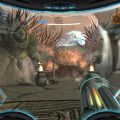The Metroid series was sent into hibernation after Retro Studios moved on to work on the Donkey Kong Country Returns franchise, and Other M was a flop. It briefly re-emerged with Metroid Prime: Federation Force, released for the 3DS in 2016. The game was developed by Next Level Games, the Canadian studio known for the Wii version of Punch-Out!! as well as the later Luigi’s Mansion games.
Federation Force is a multiplayer-focused spin-off, similar to Metroid Prime Hunters on the DS, though with a focus on cooperative rather than competitive play. The narrative centers on the marines of the Galactic Federation, who appeared prominently in Metroid Prime 3. Accordingly, you don’t play as Samus, but as one of these nameless soldiers, taking on 22 missions across three planets. The game supports local as well as online play, though the multiplayer is missing voice chat, which even Hunters had, instead relying on canned phrases.
The game mercifully ditches the control pad/touch screen scheme used in Metroid Prime Hunters. On a regular 3DS, the controls are similar to the GameCube Metroid Prime games, with a lock-on function, as well as gyro functionality that lets you look around when holding the R button. With a New 3DS or Circle Pad Pro, the C-stick can also be used to turn the player, making for standard FPS dual analog controls. Your mecha can double jump, and also hover for short distances, though the walking speed is painfully slow and there’s no way to run. There’s obviously no Morph Ball either, since that’s a Samus Aran thing.
Though you never actually see the face of the marine you’re controlling, you can customize them to an extent, like their color, as well as their voice, where you can give them a male or female voice (in Japanese or English) and change the pitch to make them sound distinct. There are also several subweapons and items that you can pack, like Repair Kits to replenish your health, decoys to distract enemies, and various weapons like missiles, flame shots, ice missiles, and so forth. You can only select a few to bring per mission though, with replenishments found in destroyed boxes. There are also mod chips that provide different functions, and again, you’re limited in what you can equip. Some are kept permanently when you find them, but others break after being used a certain amount of times, or can be destroyed if you fall in battle.
There’s some sort of objective in each stage – usually get to the end and destroy something – but there are also more varied goals, like forcing ice beasts into cages to capture them. Many of them also have some kind of time escape sequence at the end, which has become a Metroid hallmark at this point. Though most of the game is spent piloting mechanical suits (whose designs are roughly based on Samus’), there are some occasions where you need to jump around and control your character directly. These segments are displayed in the third-person perspective, but without any weapons or armor, your poor marine can be disposed of quickly. These on-foot segments typically concentrate on stealth or simple platforming challenges. You’re also scored at the end of mission, with bonuses given for finishing within a certain time limit or when completing secondary objectives.
Given this stage-based, mission-based structure, there’s very little Metroid about this at all. Some of the mod chips are hidden, which at least gives the incentive to look around areas a bit, but the areas aren’t anything too complex. Plus the fact that many of them aren’t even permanent upgrades makes the abilities feel less important than they should.
Like Hunters, Federation Force is designed as a multiplayer game first and foremost. Prime Hunters gave a cobbled-together single-player experience that wasn’t great, but still serviceable. In contrast, Federation Force just feels really boring, primarily due to its co-op nature. The stages are all built with the expectation that you’re playing with more than one player, resulting in bosses that take too long to kill or stages that feel tedious if you’re doing them alone. A prime example is in the second stage, where you need to move around four sets of rolling balls to unlock a door. With four players, each one would divide the tasks and proceed quickly, but it’s all on the shoulder of one player if they’re doing it alone.
Additionally, if one player dies in multiplayer mode, one of the others can just resurrect them. But if you die in single player mode, that’s it, you’re done. And since there aren’t any checkpoints, you need to restart the whole mission. One concession in single-player mode is an unbreakable mod chip that doubles your attack power and defense, to help you weather enemy attacks more easily; another are the AI drones you can call in to take the slots meant for other players. But it’s also obviously just a bandage for a larger issue, which is that it needs a better single-player mode.
There’s also a competitive mode called Battle Ball, which is a galactic sport played by the space marines. Consisting of three-on-three matches, it’s basically soccer, except the ball is gigantic, and you move it around the arena by shooting it. This is a pretty fun little side mode that sets it apart from other co-op shooters. Unlike the main campaign, this mode supports Download Play, so other people don’t need a separate copy of the game; there was also a standalone downloadable version in the eShop.
Visually, the game doesn’t really hit the mark. Even though Hunters was downgraded from the mainline titles, it still looked and felt accurate to the GameCube games, giving it a certain charm. The environments in Federation Force technically look a little better since the 3DS has better polygonal capabilities, but they don’t feel like Metroid. On that same note, the music sounds like a generic Western-developed score, missing all of the texture that make the Metroid Prime games so beloved. The atmosphere is just gone.
A more bizarre choice is the decision to redesign all of the characters to use a little chibi form, with large heads and comparatively small bodies, making them look like animated toy figures. Though it may have been done to attract the slightly younger audience of the portable 3DS, the designers also stated that the smaller characters work better given the portable screen. However, Metroid Prime Hunters worked fine with its realistically proportioned designs, so perhaps that premise is ill-considered.
There’s a little more story in Federation Force compared to Hunters – it takes place shortly after the end of Prime 3 – but it’s relegated to dialogue given by the marine superiors. Samus Aran does appear in the story, and it is cool to see her operate from a perspective other than her own. But she’s also made part of the game’s ridiculous final boss fight, where her suit gets infected and sticks it permanently in Morph Ball mode. This last battle plays out like Battle Ball, except with an enormous Samus rolling around. There’s also a final cutscene involving Sylux, one of the rivals from Hunters, implying that they’ll be around for the next entry.
Federation Force earned the immediate ire of the Metroid fanbase due to the poor state of the franchise at the time. Here was this weird spin-off game that didn’t star Samus, focused on a part of the Metroid storyline that almost no one cared about, and was a multiplayer shooter that had basically none of the elements that people want or expect from a Metroid game. Even on its own terms, though, it’s nothing special. Taken as a co-op multiplayer shooter, it’s occasionally fun, but the single-player mode is just slow and plodding. In the end, it’s simply an unremarkable game that no one really wanted to begin with.
